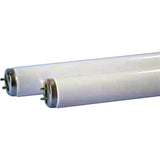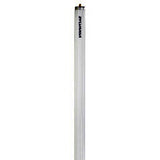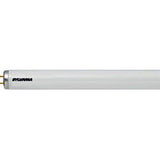What are Benefits of Full Spectrum Light?
Posted by Nick on for ProLampSales

This article examines the many health benefits of human exposure to full spectrum light, otherwise known as daylight simulating light sources.
Psychological
Most people prefer daylight from windows and skylights to electric light. Daylight gives people a positive feeling and can help improve mood and motivation. Because "full spectrum" light bulbs produce the appearance of white or bluish-white light and because they also produce a higher perception of brightness, there is often a positive association with daylight. Any bulb with a color temperature of 5000K or higher will produce light perceived by most people as similar to daylight. Incandescent bulbs coated with neodymium do not have a color temperature of 5000K or higher, but they provide this same positive association with daylight by filtering out the yellow cast common from standard incandescent light bulbs. Neodymium bulbs also tend to make blues and reds appear richer. Read a more detailed explanation of color temperature.
Health
Full spectrum light therapy is sometimes recommended for people suffering from seasonal affective disorder (SAD). Research shows that any light source (preferably daylight) at 10,000 lux (1000 footcandles) aimed toward the eye for 30 minutes a day, can be effective. Light sources with a strong blue wavelength component are most effective. "Full spectrum" lights usually meet this standard. Any electric light bulb with a "color temperature" of 5000K or higher also meets this standard. Above find a list of bulbs offered by us with a color temperature of 5000K or higher and light bulbs labeled by the manufacturer as "full spectrum". Read a more detailed explanation of seasonal affective disorder.
Color
Daylight provides the highest level of accurate color rendering. Most incandescent and halogen light bulbs produce light that is excellent at color rendering. However, they usually do not also produce the bluish white light associated with daylight. Full spectrum light sources, usually fluorescent, often attempt to provide both excellent color rendering and light that appears similar to daylight.
The lighting industry uses a value called the Color Rendering Index (CRI) to describe the ability of a light source to render colors. The higher the number, on a scale up to 100, the better the light source for accurate color rendering. By definition, daylight and incandescent light sources have a CRI of 100. Typically, fluorescent, HID and other light sources have lower CRIs. However, these same bulbs can be manufactured with CRIs of 90 or higher. Many light bulbs marketed as "full spectrum" have a CRI of 90 or higher (note that neodymium bulbs do not have high CRIs). When color identification is important such as in graphic arts, museums, color printing and the fabric industry, high CRI illumination is beneficial. There are many non-incandescent light bulbs that provide CRIs of 90 or higher. See a more detailed explanation of color rendering index, CRI.
- Posted in Health
Featured Products (View All)
0 Comments



